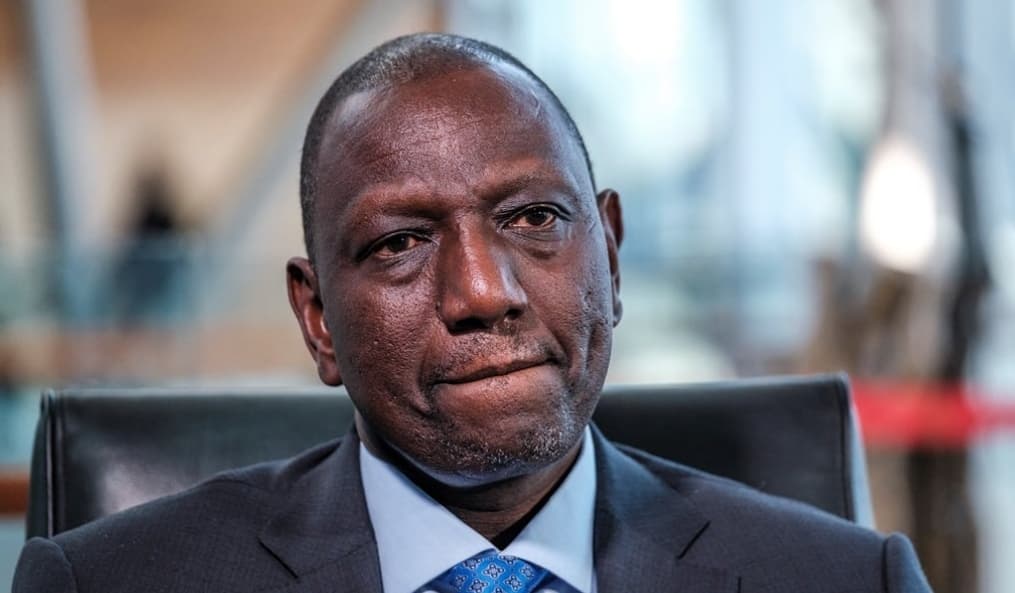NAIROBI, KENYA, March 18: Nearly half of Kenya households earn less than Sh5,000 per month while two percent have completely no income.
A new survey on estimated total monthly income also indicates that 1 percent earns between Sh55, 000 to Sh75, 000 and another one percent earning between Sh75,000 and Sh100000 per month.
According to the survey, 4 out of 10 Kenyans earn a meagre Sh 150 Daily, way below the minimum wage.
The study for the first quarter of the year involved face to face interviews at the household level with Kenyan adults aged 18 and above living in urban and rural areas.
“Field managers visit at least 15 percent of the respondents in the sample at their households to confirm the interviews (i.e. back-checking). After the interview data are electronically transmitted to the server: an independent team then makes random phone calls to 20 percent of the respondents to confirm that the interviews were conducted with the said respondents,” says the quality control measures of the research.
Main source of household income is the self-employment at 23 percent while agriculture comes second at 23 per cent. Private sector contributes 18 percent while public sector and ‘given money by others’ represent 7 and 6 percent respectively.
Retirement pension, casual labour and livestock 1, 2 and 3 percent in that order
By the 23 percent whose main source of household income is agriculture, cereals that is maize, wheat, rice form 66 percent while banana forms 1 percent.
The main sources of self-employment are general goods kiosk, livestock marketing, foodstuff kiosk, hair dressing, carpentry, transport, formal private sector, and agriculture produce marketing.
At the Same time, the Survey reveals that majority of young Kenyans are struggling with unemployment despite having relevant academic credentials, while the few, less that 10% who are employed are underpaid.
This revelation comes in the wake of the 2024 Financial Services Monitor by Old Mutual, which paints a picture of financial distress among Kenyans, with many struggling to cope with rising living costs and job insecurity.
More than three-quarters of Kenyans (78 per cent) have seen their earnings decline in 2024, highlighting the economic difficulties facing workers.
The 2024 Financial Services Monitor paints a picture of financial distress, with many struggling to cope with rising living costs and job insecurity.
The report shows that while 34 per cent of Kenyans have maintained the same income levels as in 2023, only 22 per cent are earning more.
The findings highlight widespread financial stress, with almost half (48 per cent) of working Kenyans feeling financially strained. An overwhelming nine in 10 consumers are earning the same or less than they did before the Covid-19 pandemic, meaning most have less disposable income than before the crisis.
As a result, the report notes that confidence in the economy remains low, with only 16 per cent of Kenyans expressing optimism about the economic outlook. It adds that the situation is worse among younger people, with confidence levels dropping to just seven per cent among those aged 20 to 29.
According to the report, financial obligations are a major contributor to stress, with three in four working Kenyans having children, most of whom are under 12 years old.
Additionally, 58 per cent provide financial support to other adult dependents, primarily their parents.
This has resulted in 46 per cent of Kenyans belonging to the so-called “sandwich generation”, meaning they are responsible for both children and elderly family members.
“Financial dependency remains substantial. There are significantly more households that have children (80 per cent), which, once again, highlights the financial burden placed on income generators,” reads the report.
The report also adds that education remains a top financial priority, with 40 per cent of Kenyans saving specifically for their children’s schooling.
The cost of education is also the most common unexpected expense leading to loan applications. In the past year, 41 per cent of Kenyans borrowed money from family or friends to sustain themselves, while one in four sought loans from chamas (groups where people pool their savings to invest in a common goal). Additionally, 38 per cent depleted their savings to cover daily expenses.
Debt repayment is among the top three financial priorities for Kenyans, with formal credit sources including credit cards (34 per cent), personal loans from chamas (25 per cent), and personal loans from friends or family (24 per cent).
Meanwhile, 37 per cent rely on mobile money loans. When it comes to savings, 22 per cent of employed Kenyans use saccos, while chamas remain popular, with a 44 per cent participation rate. These informal financial groups are primarily used for saving towards education, property acquisition, and business ventures.
Entrepreneurship is also a key financial strategy for many Kenyans, with over half engaged in self-employment or business ownership. However, most businesses are small-scale, operated by the founder alone or with a team of five or fewer employees.
Starting a business ranks as the second-highest savings goal, particularly among those under 50 years old. Additionally, 22 per cent of Kenyans are classified as “polyjobbers,” meaning they earn an extra income alongside their regular jobs.
Despite recognising the importance of long-term financial planning, the report notes that many Kenyans struggle to prepare for retirement.
While 81 per cent acknowledge the need for retirement savings, only 26 per cent have actually started saving.
Retirement planning ranks low among financial priorities, coming in ninth place. Instead, about half of Kenyans hope their children will support them in old age. Those who have begun saving for retirement do so through pension funds, saccos, and bank savings accounts.
Access to financial guidance remains limited, with almost nine in 10 Kenyans lacking a financial adviser. Further, 43 per cent do not know who to turn to for financial advice, while only one in five receive financial information from their employers.
Despite the economic challenges, the report states that many Kenyans remain hopeful, with 63 per cent expecting their financial situation to improve in the next six months.
They attribute this optimism to potential business growth, better job opportunities, and increased investment prospects.
According to JULISHA.CO.KE, A development manifesto is needed that works out new development priorities for African countries that focuses on delivering a new level of development for those people who are entirely left behind through three specific sectors – education (ensure there is a high quality primary and secondary school in every ward), health (make sure there is a health centre in every ward) and the economy (build social infrastructure – not roads and bridges – that make it possible for people to take advantage of their local resources to make a living.
e.g. make sure there are well qualified agricultural extension officers in every agricultural ward, fisheries officers in fishing communities etc.)
What this would mean is a change in policy from one that promotes large scale investment in a few large projects and businesses and instead in promoting the development of hundreds of small and medium enterprises that trade globally.
Our view is that this would be a significant boost to the wealth of Kenyans within one generation as we shall have more Kenyans having access to opportunities and wealth.







